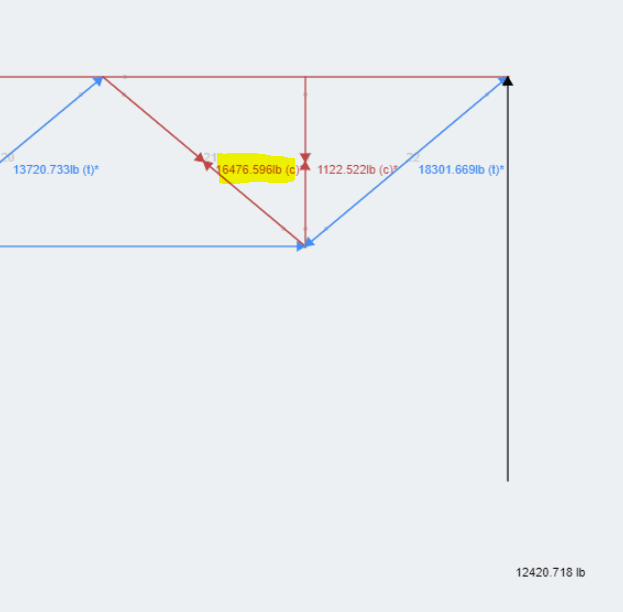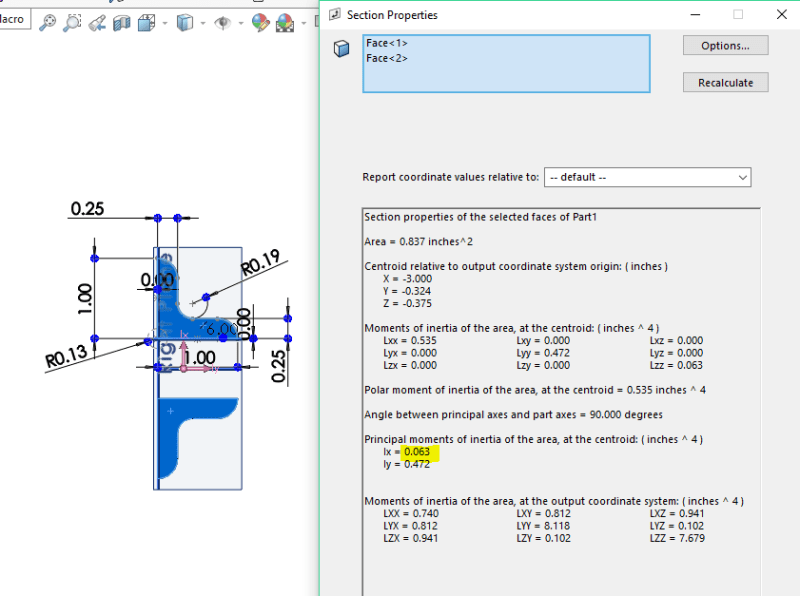Hey guys,
I have gone ahead with my own analysis of the custom joist. Canam has a good reference to the SJI standard specification for joists on their website (
I'm using SkyCiv to analyze the axial and bending forces (top chord only) in my members. One end pin and one end roller. As a reminder, these are the member sizes for the 30" deep Warren truss.
Top chord - 3" x 3" x 3/8" back to back angle
Bottom chord = 2" x 2" x 3/8" back to back angle
Vertical web members = 3/4" square bar
Diagonal web tension members = 3/4" square bar
Diagonal web compression members = 1" x 1" x 1/4" back to back angle
Joists are on 6' centers. Loading is as follows
Snow load 41.8 psf which equates to 20.9 lbf/in on each truss.
Roof dead load is 30 psf which equates to 15.0 lbf/in on each truss.
Self weight of the truss. Below is a picture of the displacement along with the reaction forces as a sniff check.
With just these loads alone, I get a peak compressive force in the web angles of about 16 kip (close to the support point as expected). Looking at the slenderness ratio of a single 1" x 1" x 1/4" web angles (length = 46.8in, r = 0.18), it is beyond 200. I'll need to go to site to confirm but I'm thinking these back to back angles must be connected to one another to act as a single member in buckling. If that is the case, and they are spaced 3/4" apart due to the square bar member, the combined radius of gyration for the two members is 0.27 in (I = 0.063 in^4, A = 0.83 in^2). This still leads to a critical buckling stress below 9.0 ksi. Stress in the angles is about 19.0 ksi. Something must be wrong with one of my assumptions if these members are failing so badly under what should be their design loads.





